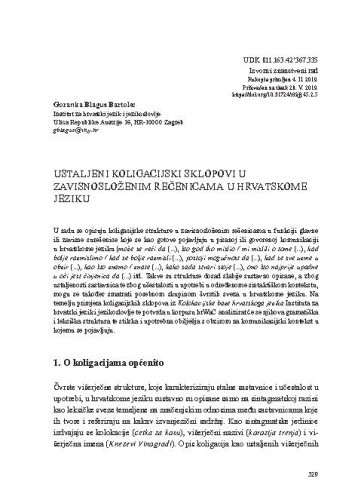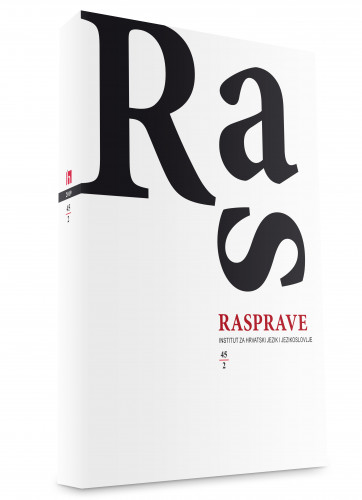U radu se opisuju koligacijske strukture u zavisnosloženim rečenicama u funkciji glavne ili zavisne surečenice koje se kao gotove pojavljuju u pisanoj ili govorenoj komunikaciji u hrvatskome jeziku (može se reći da (...), što god tko mislio / mi mislili o tome (...), kad bolje razmislimo / kad se bolje razmisli (...), postoji mogućnost da (...), kad se sve uzme u obzir (...), kao što znamo / znate (...), kako sada stvari stoje (...), ono što najprije upadne u oči jest činjenica da (...) itd. Takve su strukture dosad slabije sustavno opisane, a zbog ustaljenosti sastavnica te zbog učestalosti u upotrebi u određenome sintaktičkom kontekstu, mogu se također smatrati posebnom skupinom čvrstih sveza u hrvatskome jeziku. Na temelju primjera koligacijskih sklopova iz Kolokacijske baze hrvatskoga jezika Instituta za hrvatski jezik i jezikoslovlje te potvrda u korpusu hrWaC analizirat će se njihova gramatička i leksička struktura te stilska i upotrebna obilježja s obzirom na komunikacijski kontekst u kojemu se pojavljuju.; Fixed multiword structures in Croatian, characterized by constant components and frequency in use, are only systematically described at the syntagmatic level (collocations, multiword terms and multiword names). Colligations as a fixed structures at the level of sentences are only marginally described in the Croatian language (Blagus Bartolec 2014). In foreign literature, the colligations were first mentioned by Firth (1957), which defined them as the structures with firm grammatical and syntactic dependencies within certain categories of words: “The statement of meaning at the grammatical level is in terms of word and sentence classes or of similar categories and of the inter-relation of those categories in colligations.” Siepmann (2005a) and Hoey (2005) describe colligations as structures based on morphosyntactic correlation of the word. In the recent interpretations, especially from the aspect of language teaching, it is pointed out that colligations express the ability of some words to associate with other words and thus form the fixed grammatical structures (Lackman 2016). The paper will describe the structure of colligations in subordination in the function of the main or subordinate clause that appear in written or spoken communication (može se reći da ‘it can be said that’, što god tko mislio / mi mislili o tome ‘whatever anyone thinks / whatever we think’, kad bolje razmislimo / kad se bolje razmisli ‘when you think about it’, postoji mogućnost da ‘there is a possibility that’, kad se sve uzme u obzir ‘when everything is taken into consideration’, kao što znamo / znate ‘as we know / as you know’, kako sada stvari stoje ‘as things stand now’, ono što najprije upadne u oči jest činjenica da ‘what first gets in eyes is the fact that’ etc.).
Sažetak

 Rasprave Instituta za hrvatski jezik i jezikoslovlje 45,2(2019) / glavni urednik Željko Jozić.
Rasprave Instituta za hrvatski jezik i jezikoslovlje 45,2(2019) / glavni urednik Željko Jozić.